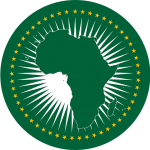Since 2010, Africa’s been the largest recipient of Chinese foreign aid, even as China’s ties in Asia have grown to be more geopolitically consequential.
However, when reviewing data in the recently-published white paper on Chinese international development, analysts at the Beijing-based consultancy Development Reimagined noted that “the share of China’s aid to Africa has fallen from 51.8% over 2010-2012 to 44.65% now, but that still means an absolute increase from $2.1 billion to $3.1 billion annually over 2013-2018.”














